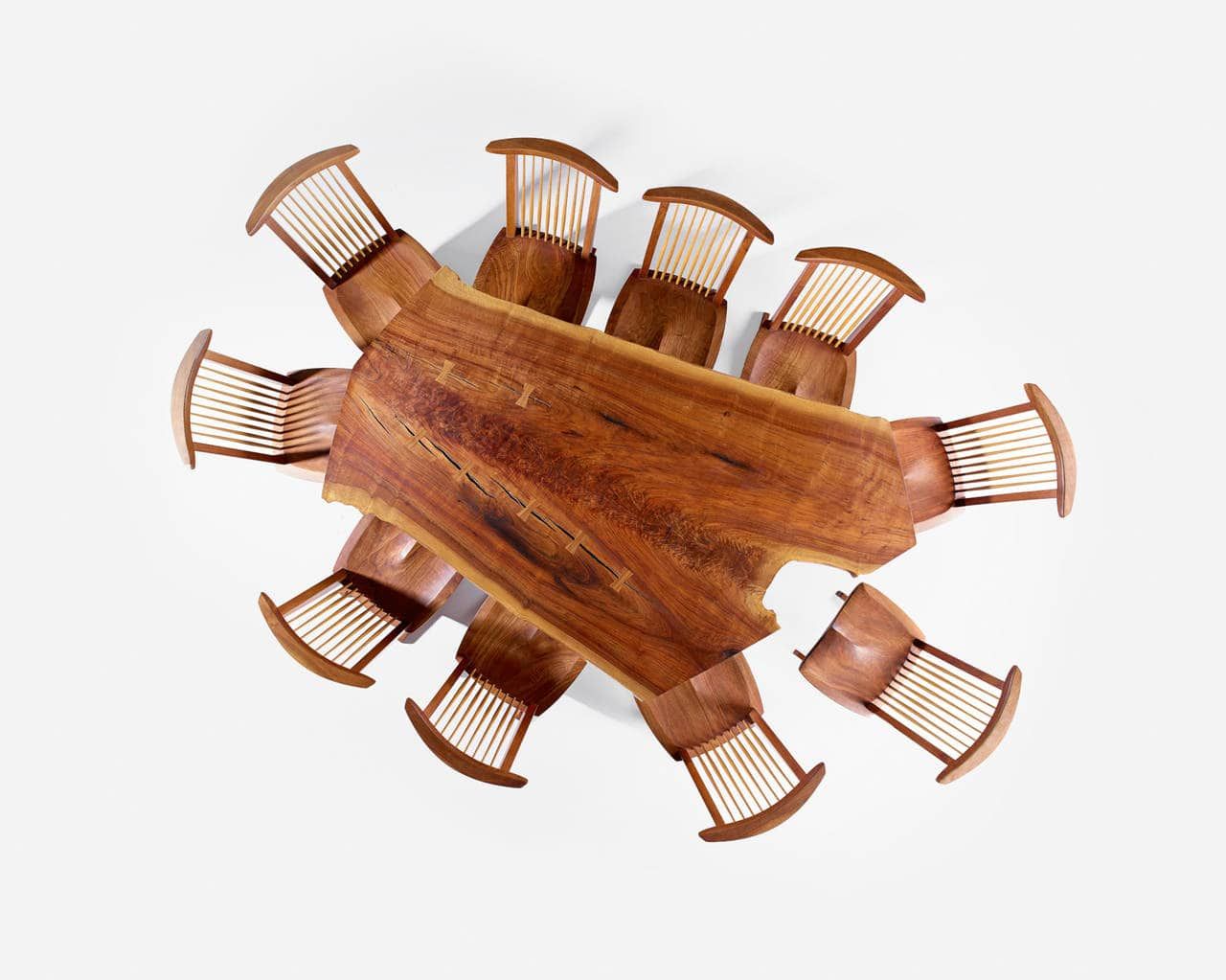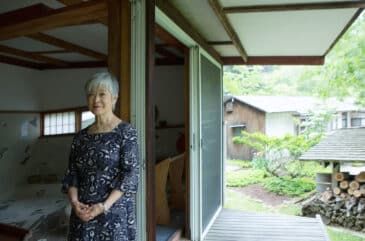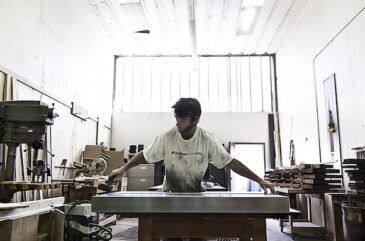
Master woodworker George Nakashima encouraged his fellow craftsman to respect “the soul of the tree.” Dining table and chairs by Nakashima, from Exchange Intl. Photo by Ross Floyd.
You might not automatically associate 1stdibs with Earth Day. But when you think about it, so much of what we believe in — namely, the beauty and endurability of things from the past — stands in stark contrast to a disposable world that harms our planet. When something is designed to last forever, its value is far more complex than its price or the sum of its materials. Which is why we’ve gathered the below group of statistics. Each one reminds us both of the value of our planet, and of the beautiful things we can build on it.
11,500,000: In tons, the amount of furniture that ends up in American landfills every year.
3,300: The number of pages in Restoration Hardware’s controversial, mammoth June 2014 catalog. Hundreds of angry recipients returned the 17-pound bundle to their local stores in protest.
23: The number of US Senators who introduced the Chemical Safety Improvement Act to call upon the EPA for closer review of whether chemicals used in contemporary furniture production are harmful to humans.
90: Percent of primeval birch trees that have been harvested for timber in Karelia, a northwestern Russian republic in which IKEA maintains a 1,200 square mile logging concession.
1,010,000: The number of Google results for the search term “Ikea fail.”
20: The percentage of the total industrial water pollution that’s due to textile dyeing and treatment.
68: Pounds of clothing that the average American throws out in a calendar year.
1,900: Tons of cyanide used annually by a large-scale gold mine in a terrifying process called “heap leaching.”
95: The percent of lead by weight in the most toxic costume jewelry found at H&M and Forever 21 in 2012.
20: Tons of waste generated in the production of one new gold ring. Which makes the vintage jewelry on 1stdibs that much more aesthetically and ethically superior.
$97,395: Adjusted for inflation, the very affordable cost of a Usonian home constructed in Pleasantville, New York, where Frank Lloyd Wright pursued his vision for affordable middle class homes that saved energy (and money) through passive heating and cooling systems.
2,700,000: Tons of plastic used each year to make disposable water bottles, 86% of which end up in landfills. Go green with tap water and a vintage pitcher.




